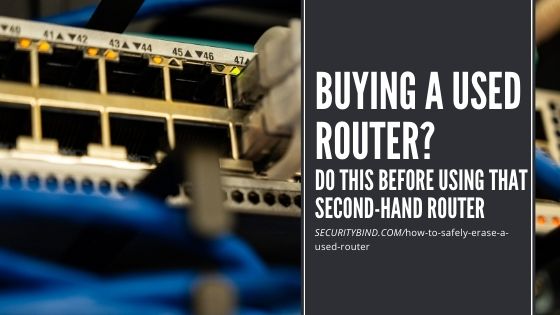The Domain Name System (DNS) is like the internet’s address book, helping your computer turn website names (like www.example.com) into IP addresses (like 192.0.2.1) so it can find and connect to the right website. It makes using the internet simple for us, but there are some security issues that can make it risky if not properly managed.
This guide will walk you through how DNS works, how attackers can target it, and what you can do to keep your DNS safe with simple steps.
How DNS Works (in 5 Easy Steps)
When you want to visit a website, your computer follows these steps:
- You Type a Domain Name: You enter
www.example.comin your browser. - Your Browser Asks a DNS Resolver: The browser sends a query to a DNS resolver, which acts like a helpful assistant looking for the answer.
- DNS Resolver Checks the Cache: If the resolver has looked up this website recently, it might already have the answer saved (in its cache) and can send it to you right away.
- DNS Resolver Asks Around (if needed): If the resolver doesn’t know the answer, it asks other DNS servers:
- Root Servers: These send the resolver to the right Top-Level Domain (TLD) server, such as the one for
.com. - TLD Server: This server points the resolver to the Authoritative DNS server for the specific domain, like
example.com. - Authoritative DNS Server: This server knows the correct IP address for
www.example.comand sends it back to the resolver.
- Root Servers: These send the resolver to the right Top-Level Domain (TLD) server, such as the one for
- The Answer is Returned: The DNS resolver sends the IP address back to your browser, which then connects to the website’s server.
Key DNS Parts to Remember
- DNS Resolver: Like a helpful assistant, it finds out where the website is located.
- Root Servers & TLD Servers: These guide the resolver to the right place.
- Authoritative DNS Server: Holds the final answer— the IP address of the website.
Examples of DNS Records
DNS doesn’t just map domain names to IP addresses. Here are a few types of DNS records:
- A Record: Maps a domain to an IPv4 address (
192.0.2.1). - AAAA Record: Maps a domain to an IPv6 address.
- CNAME Record: Redirects one domain to another (e.g.,
www.example.comtoexample.com). - MX Record: Directs email to the right mail server.
- TXT Record: Contains text information (often for verifying domain ownership or email security).
Common DNS Security Problems (and How to Fix Them)
DNS is fundamental, but it’s also a target for attackers. Here are some common DNS security concerns and how you can protect yourself:
1. DNS Spoofing (AKA DNS Cache Poisoning)
What It Is: Attackers trick your DNS resolver into sending you to a fake website by feeding it bad information. For example, you type www.bank.com, but the attacker makes your resolver send you to a malicious site that looks like your bank’s website.
- Example: You think you’re logging into your bank, but the spoofed DNS sends you to a phishing site, stealing your credentials.
How to Prevent It:
- Use DNSSEC (DNS Security Extensions): This adds a layer of security by digitally signing DNS data. If the data has been tampered with, your DNS resolver will detect it.
- Action Step: Check if your DNS provider supports DNSSEC, and if not, switch to one that does, such as Google DNS or Cloudflare DNS (1.1.1.1).
- Use a Secure DNS Resolver: Choose trusted DNS services with strong security measures, like Google Public DNS or OpenDNS.
- Action Step: To change your DNS, go to your network settings and enter your new DNS server’s IP (for Google DNS:
8.8.8.8and8.8.4.4; for Cloudflare DNS:1.1.1.1).
- Action Step: To change your DNS, go to your network settings and enter your new DNS server’s IP (for Google DNS:
2. DNS Amplification Attack (DDoS Attack)
What It Is: Attackers use open DNS resolvers to flood a target server with huge amounts of data, overwhelming it and causing it to crash. This is part of a Distributed Denial-of-Service (DDoS) attack.
- Example: A company’s website is brought offline because it’s flooded with DNS responses, causing its server to crash.
How to Prevent It:
- Use Rate Limiting and Filtering: If you run a DNS server, limit how many DNS queries can be answered per second.
- Action Step: Make sure your DNS server has rate-limiting features enabled to block excessive requests.
- Disable Open DNS Resolvers: If you’re running a DNS server, make sure it’s not configured as an open resolver, meaning it only responds to your internal queries.
- Action Step: Check your DNS server settings and restrict it to known users only.
3. DNS Tunneling (Data Theft)
What It Is: Attackers use DNS queries to carry hidden data, often to send sensitive information out of a network, bypassing security controls.
- Example: An attacker in your company uses DNS queries to sneak out sensitive data, such as customer information, past your firewalls.
How to Prevent It:
- Monitor DNS Traffic: Watch for abnormal DNS requests, such as unusual domain names or an unexpected amount of traffic.
- Action Step: Use DNS logging tools to track what DNS queries are being made and set up alerts for suspicious activity.
- Implement DNS Filtering: Use DNS filtering tools to block access to known malicious domains.
- Action Step: Install DNS filtering software like OpenDNS or NextDNS to block bad domains automatically.
5 Quick Actions to Secure Your DNS
- Switch to a Secure DNS Provider: Change your DNS to a trusted provider like Google DNS (
8.8.8.8) or Cloudflare DNS (1.1.1.1). This ensures you’re using a secure, reliable service. - Enable DNSSEC: Ensure your DNS provider supports DNSSEC to prevent DNS spoofing. If you run a website, enable DNSSEC for your domain to add a layer of protection for your visitors.
- Monitor DNS Traffic: Keep an eye on DNS queries made on your network. Set up alerts for abnormal DNS activity to detect potential tunneling or spoofing.
- Disable Open Resolvers: If you manage a DNS server, make sure it’s not an open resolver to prevent DDoS amplification attacks.
- Use DNS Filtering: Set up DNS filtering to block known malicious sites, adding a protective barrier between you and harmful domains.
Key Takeaways
- DNS makes it easy for us to use the internet by translating domain names into IP addresses, but it’s also a target for cyberattacks.
- DNS spoofing, DDoS attacks, and DNS tunneling are common security threats that can lead to data theft or loss of service.
- Simple actions like switching to a secure DNS provider, enabling DNSSEC, and monitoring your DNS traffic can significantly reduce your risk of attack.
By understanding how DNS works and following these security best practices, you can keep your browsing safe and secure while enjoying a fast, reliable internet experience.


